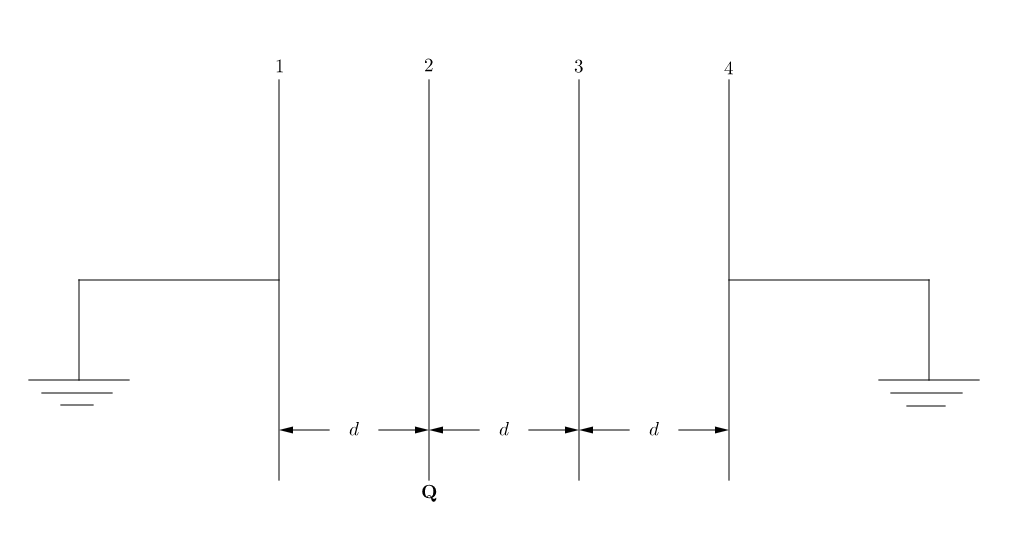Charged plates, one after the other.

Four identical metallic plates (initially uncharged), each having area of cross section are each separated by a distance of as shown in the figure above. Plate 2 is given a charge of Plates 1 and 4 are both earthed via a very thin conducting wire. Find the potential difference between plates 2 and 3.
Details and Assumptions:
- denotes the permittivity of free space .
- The plates are very large, and the phenomena of fringing of electric field lines are neglected.
- Because of the large size, the electric field due to any particular plate is considered as that of an infinitely large, thin conducting plate.
This section requires Javascript.
You are seeing this because something didn't load right. We suggest you, (a) try
refreshing the page, (b) enabling javascript if it is disabled on your browser and,
finally, (c)
loading the
non-javascript version of this page
. We're sorry about the hassle.
0 solutions
No explanations have been posted yet. Check back later!